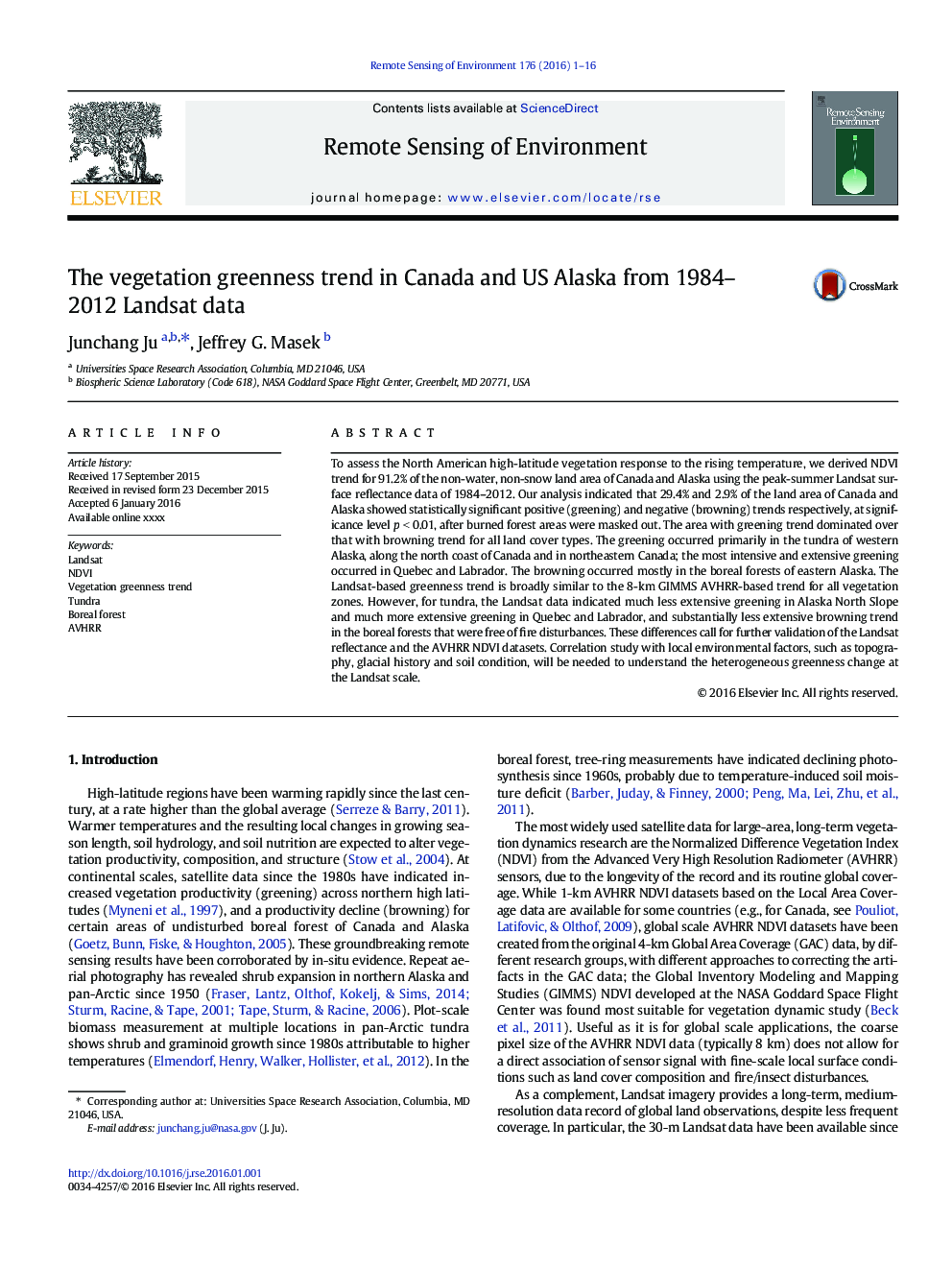| Article ID | Journal | Published Year | Pages | File Type |
|---|---|---|---|---|
| 6345331 | Remote Sensing of Environment | 2016 | 16 Pages |
Abstract
To assess the North American high-latitude vegetation response to the rising temperature, we derived NDVI trend for 91.2% of the non-water, non-snow land area of Canada and Alaska using the peak-summer Landsat surface reflectance data of 1984-2012. Our analysis indicated that 29.4% and 2.9% of the land area of Canada and Alaska showed statistically significant positive (greening) and negative (browning) trends respectively, at significance level p < 0.01, after burned forest areas were masked out. The area with greening trend dominated over that with browning trend for all land cover types. The greening occurred primarily in the tundra of western Alaska, along the north coast of Canada and in northeastern Canada; the most intensive and extensive greening occurred in Quebec and Labrador. The browning occurred mostly in the boreal forests of eastern Alaska. The Landsat-based greenness trend is broadly similar to the 8-km GIMMS AVHRR-based trend for all vegetation zones. However, for tundra, the Landsat data indicated much less extensive greening in Alaska North Slope and much more extensive greening in Quebec and Labrador, and substantially less extensive browning trend in the boreal forests that were free of fire disturbances. These differences call for further validation of the Landsat reflectance and the AVHRR NDVI datasets. Correlation study with local environmental factors, such as topography, glacial history and soil condition, will be needed to understand the heterogeneous greenness change at the Landsat scale.
Keywords
Related Topics
Physical Sciences and Engineering
Earth and Planetary Sciences
Computers in Earth Sciences
Authors
Junchang Ju, Jeffrey G. Masek,
